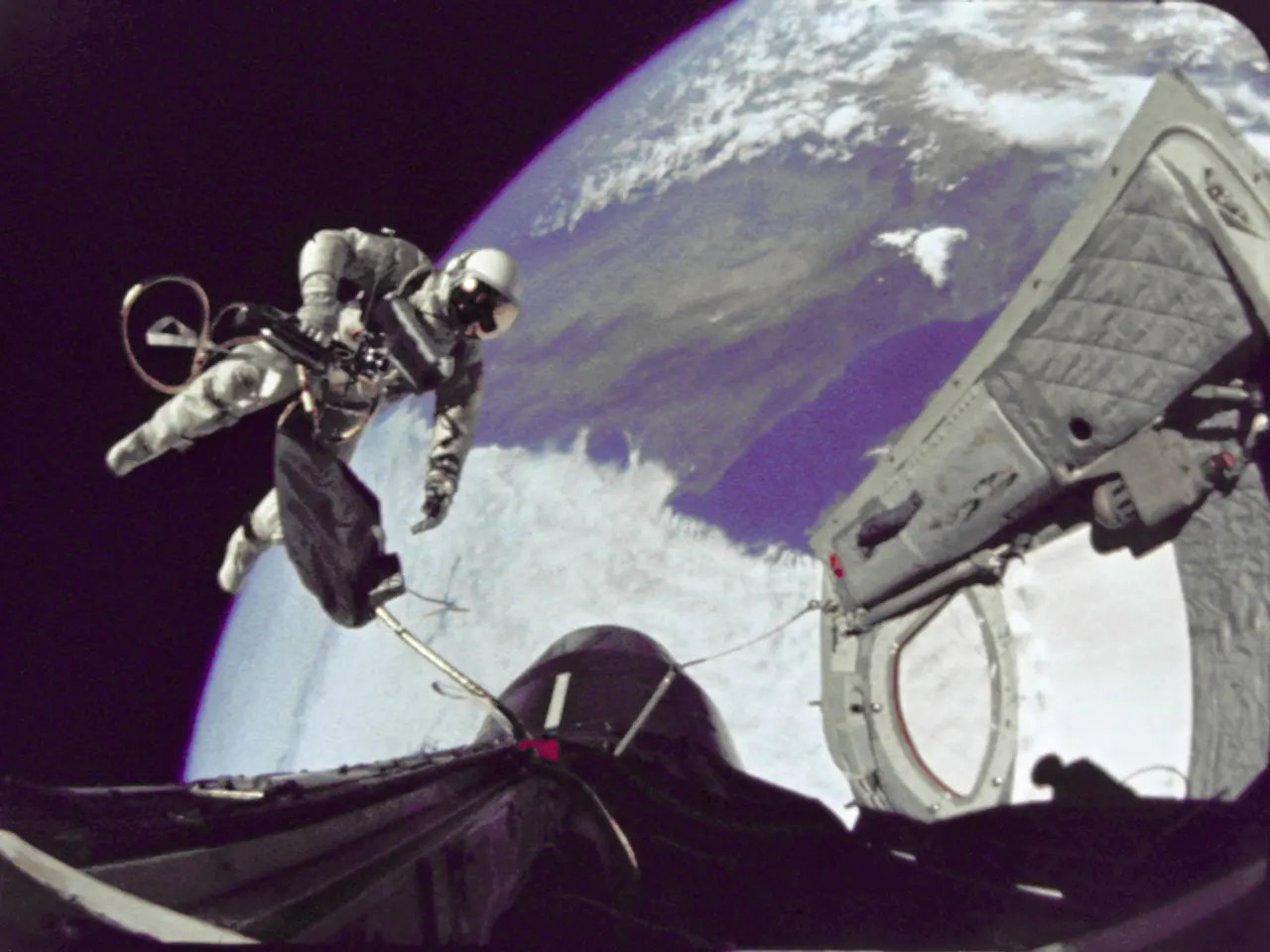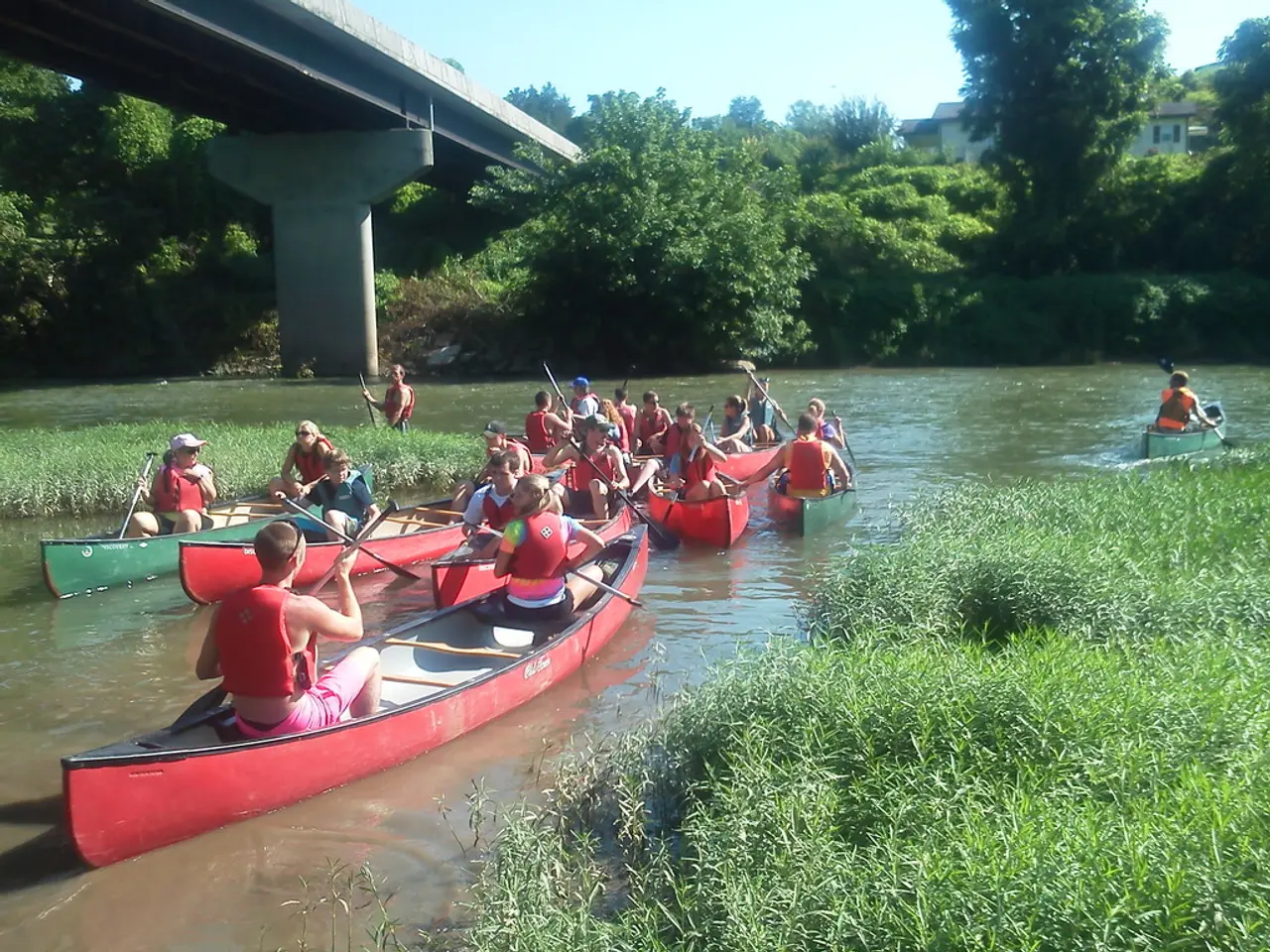Veteran astronaut and commander of Apollo 13 mission, Jim Lovell, passes away
Jim Lovell: A Hero of Human Space Exploration
Jim Lovell, best known for commanding the Apollo 13 mission, was a pioneering astronaut who made significant contributions to the field of space travel. Lovell's career spanned four missions, making him the first person to fly into space multiple times.
Lovell's early interest in planes and rockets led him to apply to the U.S. Naval Academy, although he was not initially selected. However, his determination did not waver, and he went on to become a naval aviator and test pilot, logging over 7,000 hours in aircraft, including 3,500 in high-performance jets.
Lovell's first space mission was Gemini 7 in 1965, which tested human endurance in space for nearly 14 days. He served as the pilot alongside command pilot Frank Borman. This mission set a space endurance record that stood until the early 1970s.
Following Gemini 7, Lovell commanded Gemini 12, the final Gemini mission. During this mission, Lovell helped perfect spacewalk techniques, which were essential for the success of the Apollo program.
The high point of Lovell's career, according to him, was Apollo 8. Commanded by Lovell, Apollo 8 was the first crewed spacecraft to orbit the Moon, a historic milestone in the space race. The mission demonstrated deep space navigation and paved the way for landing on the Moon. Apollo 8 entered lunar orbit on Christmas Eve 1968, giving the United States something to be proud of during a turbulent year.
However, it was Apollo 13 that would become the most famous of Lovell's missions. As Mission Commander, Lovell faced a life-threatening crisis when an oxygen tank explosion crippled the spacecraft en route to the Moon. Despite the odds, Lovell's calm and resourceful leadership, working with engineers on the ground and his crew (Jack Swigert and Fred Haise), managed to execute a slingshot trajectory around the Moon and bring the crew safely home. The now-famous phrase, "Houston, we've had a problem," was uttered during this mission.
After Apollo 13, Lovell was disappointed that the near-disaster cost him his only chance to land on the Moon. However, he considered the mission a "successful failure" because despite not landing on the Moon, the crew's safe return was a triumph of teamwork and ingenuity.
Lovell's accomplishments in space earned him recognition, and he wrote a book about the Apollo 13 mission, which was made into a 1995 hit movie. He died at the age of 97, leaving behind a legacy that includes pioneering long-duration spaceflight, perfecting spacewalks, orbiting the Moon on Apollo 8, and commanding the tense and ultimately successful rescue mission of Apollo 13.
Lovell also believed that the U.S. space program had an enduring legacy in inspiring children to become interested in science, technology, and engineering. He lamented later in life that NASA didn't receive enough money to be bold in human exploration of the universe. Despite this, Lovell's contributions to space exploration remain an inspiration to many.
Science news often highlights the legacy of astronaut Jim Lovell, a pioneer in human space exploration. His groundbreaking work in space-and-astronomy includes being the first person to fly into space multiple times and commanding missions like Apollo 8, which was the first crewed spacecraft to orbit the Moon. In the realm of technology, Lovell's calm and resourceful leadership during the Apollo 13 crisis showcased the potential of human ingenuity in overcoming obstacles. Furthermore, Lovell extolled the virtues of the U.S. space program in fostering interest in science, technology, engineering, and mathematics, particularly among children.








